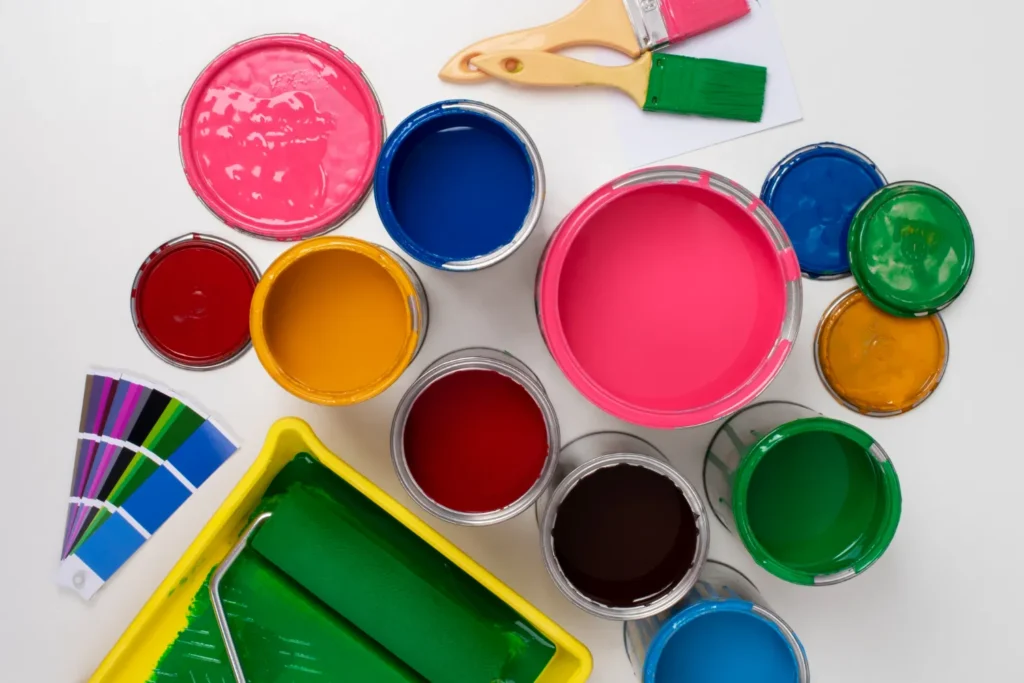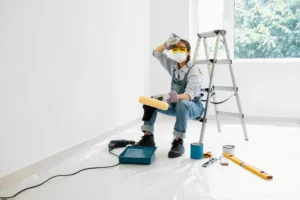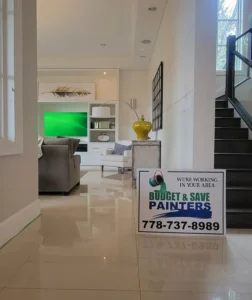Color isn’t just a visual experience; it’s deeply intertwined with our emotions and can significantly impact our mood and perception. Whether it’s the serene calmness of a soft blue or the invigorating warmth of a vibrant red, paint colors have the power to evoke a myriad of feelings within us. In this guide, we’ll delve into the psychology of paint colors and explore how different hues can transform the ambiance of your home, both indoors and outdoors.
Understanding The Emotional Impact of Colors

Creating Illusions and Emotional Spaces
Colors wield a profound influence on our emotions and perceptions, capable of transforming a space into an emotional sanctuary. Through strategic color selection, it’s possible to evoke specific feelings and create immersive environments that resonate with our innermost emotions. Whether aiming for tranquility, warmth, or invigoration, professional painting services, such as those available in Vancouver, offer expert guidance in harnessing the emotional power of colors. By understanding how different hues affect our psyche, homeowners can curate spaces that not only please the eye but also nourish the soul, fostering a profound sense of emotional well-being.
Tailoring Themes for Different Rooms
Gone are the days of one-size-fits-all color schemes for every room. Each space within a home serves a distinct purpose, necessitating a tailored approach to color selection. From tranquil greens in bedrooms to stimulating reds in dining areas, the choice of paint color can profoundly influence the ambiance and functionality of a room. By carefully considering the intended use of each space and selecting colors that complement its function, homeowners can create cohesive yet distinct themes throughout their homes. This personalized approach enhances the emotional resonance of each room, ensuring that every corner of the house reflects its intended purpose and fosters a harmonious living environment.
Harnessing the Feel-Good Factor
Certain colors possess inherent qualities that evoke specific emotional responses, tapping into our innate psychological associations. Cool tones like soft blues and greens imbue spaces with a sense of calm and serenity, making them ideal for areas designated for relaxation or meditation. Conversely, warm hues such as oranges and reds radiate coziness and warmth, perfect for creating inviting spaces during colder months. By understanding the nuanced emotional implications of different colors, homeowners can harness the feel-good factor to cultivate environments that promote emotional well-being and enhance overall quality of life.
Consulting Professional Expertise
While the concept of color psychology is captivating, navigating the vast array of hues and their emotional connotations can be daunting. Seeking guidance from professional painting consultants simplifies the process, ensuring that color choices align seamlessly with the desired emotional atmosphere of the home. These experts possess in-depth knowledge of color theory and psychological principles, enabling them to offer tailored recommendations that suit both aesthetic preferences and emotional objectives. By enlisting professional expertise, homeowners can confidently embark on their color journey, secure in the knowledge that their home will be transformed into a haven of emotional resonance and visual harmony.
Practical Applications and Implementation
Choosing the Right Color Palette
When embarking on a painting project, it’s essential to carefully consider the color palette for your home. Factors such as room size, lighting conditions, and existing decor play pivotal roles in determining the most suitable hues. Experimenting with paint samples allows you to visualize how different colors interact with the space and evoke desired emotions. By thoughtfully selecting a color palette that harmonizes with the overall aesthetic and emotional theme of your home, you can create a cohesive and inviting environment that resonates with occupants and visitors alike.
Utilizing Accent Colors
Incorporating accent colors is a powerful way to infuse depth and visual interest into your living spaces. Whether through strategically placed furniture, artwork, or accessories, accent colors can reinforce the emotional theme established by the primary paint color. By carefully selecting complementary hues and strategically integrating them throughout the room, you can amplify the desired emotional impact and create a dynamic and engaging atmosphere. Utilizing accent colors allows for versatility and customization, enabling you to tailor each space to suit your preferences and lifestyle while maintaining a cohesive design scheme.
Incorporating Texture and Finishes
In addition to color, the texture and finish of paint can significantly influence the emotional resonance of a space. Matte finishes exude a sense of understated elegance and warmth, making them ideal for creating cozy and intimate atmospheres. Conversely, glossy finishes impart a vibrant energy and sophistication, perfect for modern and dynamic spaces. Experimenting with different textures and finishes allows you to enhance the tactile experience within your home, adding layers of complexity to the emotional ambiance. By selecting textures and finishes that complement the overall design aesthetic and emotional theme, you can elevate the sensory experience and create spaces that feel truly immersive and inviting.
Regular Maintenance and Refreshment
Over time, the emotional impact of paint colors may diminish due to normal wear and tear. To ensure that the intended ambiance of each room remains intact, regular maintenance is essential. Schedule periodic touch-ups and repainting as needed to refresh the appearance and vitality of your living spaces. By staying proactive with maintenance, you can prolong the lifespan of your paint job and preserve the emotional resonance of your home’s design. Regular maintenance not only enhances the aesthetic appeal of your home but also contributes to a consistently uplifting environment that nurtures emotional well-being for years to come.
Conclusion
In conclusion, the psychology of paint colors offers a powerful tool for transforming your home into a sanctuary of emotion and expression. By understanding the emotional impact of different hues and themes, and leveraging professional expertise where needed, homeowners can curate spaces that not only reflect their personal style but also nurture their emotional well-being. Whether seeking serenity, warmth, or vitality, the right combination of paint colors can evoke the desired emotions and create a truly immersive living experience.



